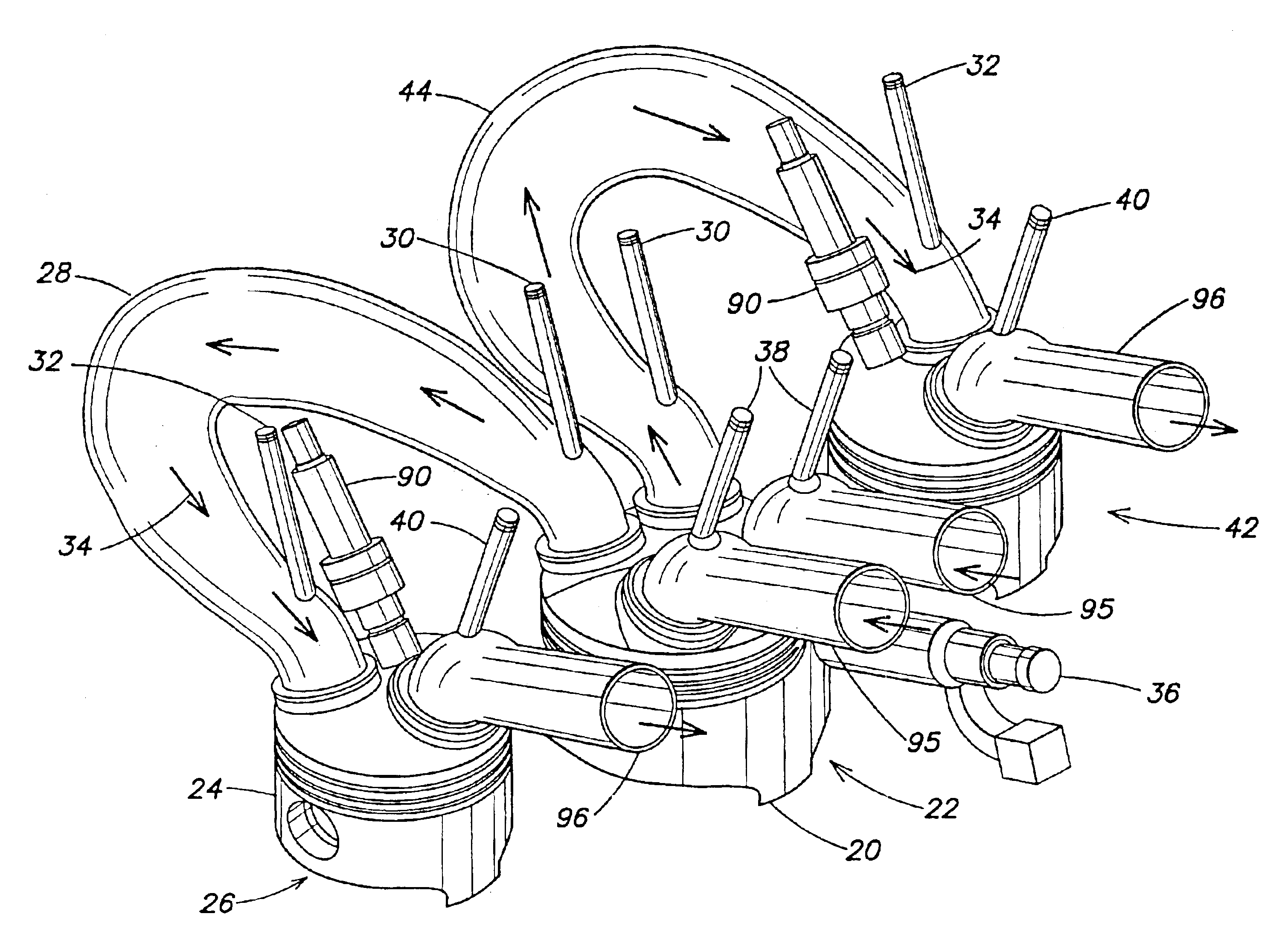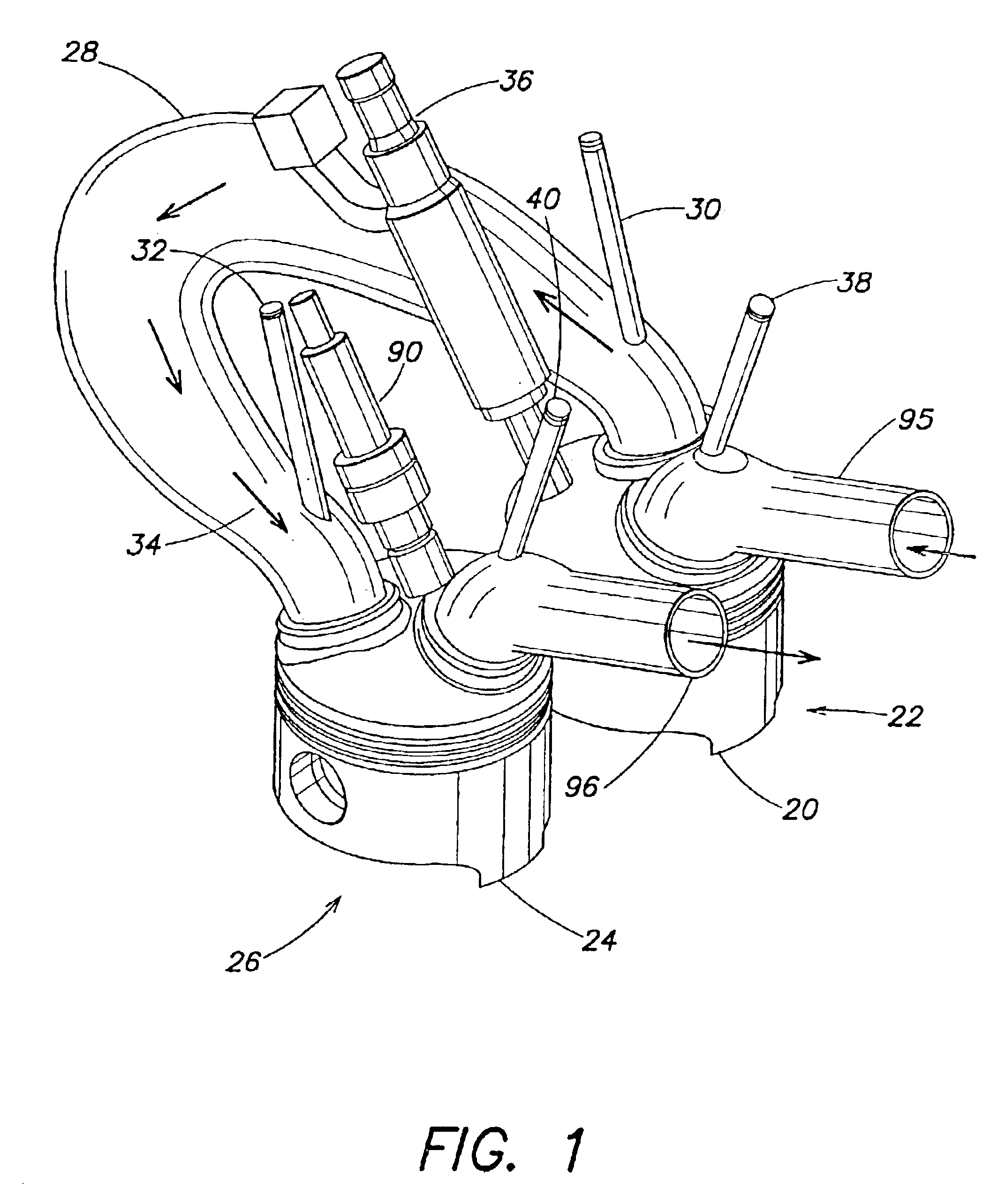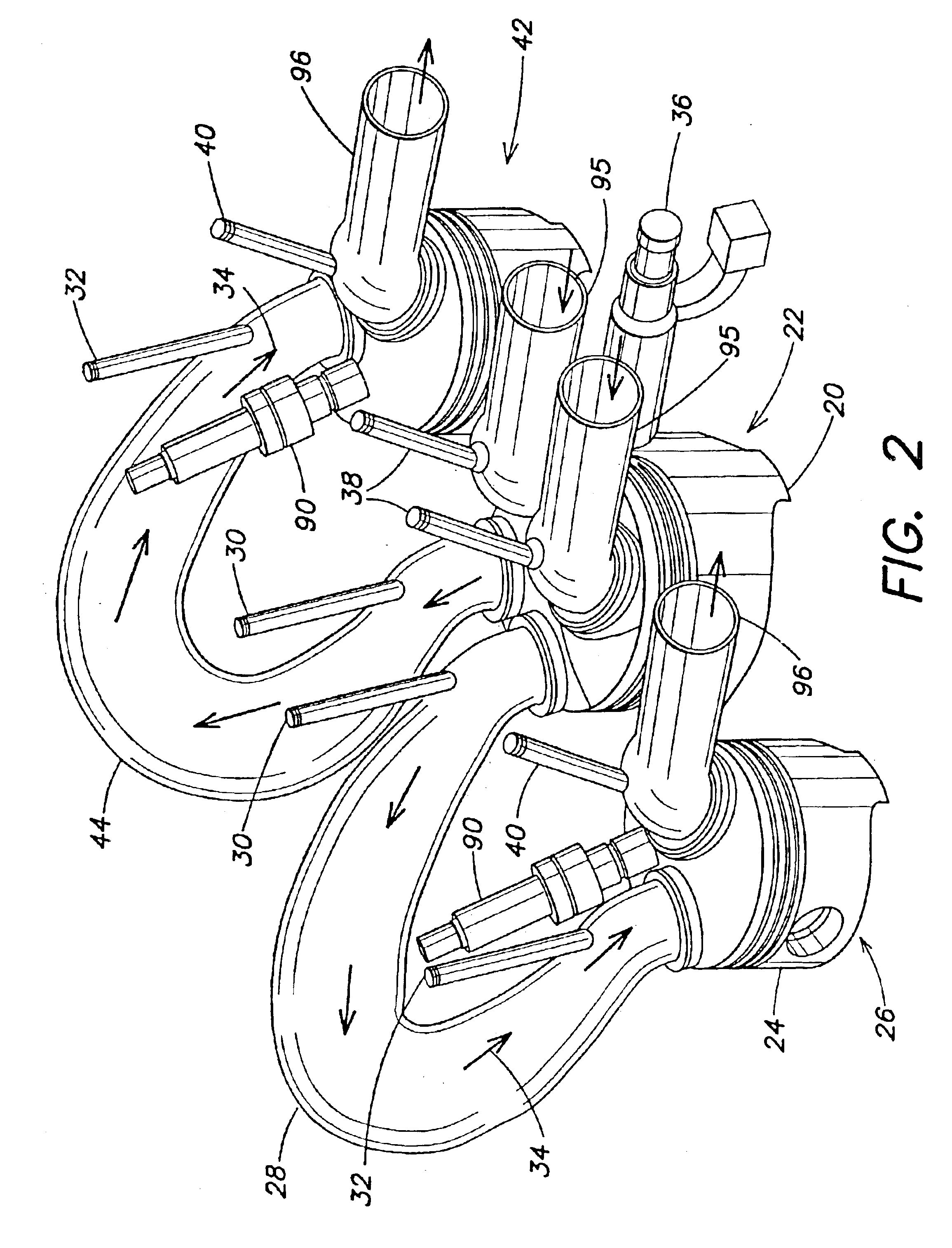Internal combustion engine
a combustion engine and combustion chamber technology, applied in combustion engines, machines/engines, mechanical equipment, etc., can solve the problems of engine not being certified for operation or sale, engine may require expensive exhaust treatment such as a catalytic converter, carbon monoxide production, etc., to improve the emissions characteristics of the engine, reduce the emission level, and improve the effect of engine emissions
- Summary
- Abstract
- Description
- Claims
- Application Information
AI Technical Summary
Benefits of technology
Problems solved by technology
Method used
Image
Examples
Embodiment Construction
[0048]The engine of the present invention has been conceived through an axiomatic design process, resulting in an engine that achieves improved emission characteristics. The engine is constructed to have improved emissions characteristics by addressing many of the causes of emissions found in conventional engines. The engine may include one or more features, each independently or in combination, contributing to improved emissions characteristics when the engine is in operation. Although employing a particular design process (i.e., axiomatic design) to develop the engine of the present invention, the present invention is not limited in this respect, as other design processes may be employed.
[0049]The engine comprises a mixing cylinder for mixing and compressing air and fuel, and a second cylinder for further compressing the mixture, combusting the air and fuel mixture and exhausting it from the engine. A conduit provides fluid communication between the mixing cylinder and the power c...
PUM
 Login to View More
Login to View More Abstract
Description
Claims
Application Information
 Login to View More
Login to View More - R&D
- Intellectual Property
- Life Sciences
- Materials
- Tech Scout
- Unparalleled Data Quality
- Higher Quality Content
- 60% Fewer Hallucinations
Browse by: Latest US Patents, China's latest patents, Technical Efficacy Thesaurus, Application Domain, Technology Topic, Popular Technical Reports.
© 2025 PatSnap. All rights reserved.Legal|Privacy policy|Modern Slavery Act Transparency Statement|Sitemap|About US| Contact US: help@patsnap.com



